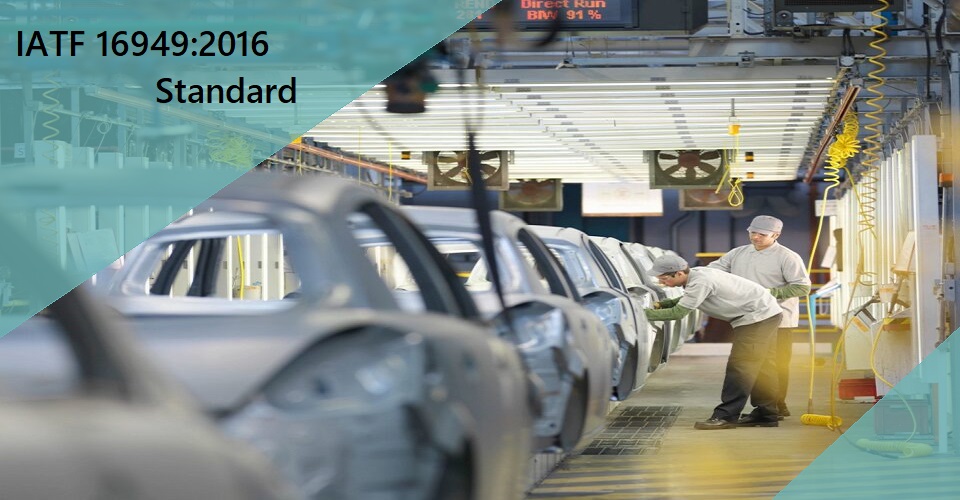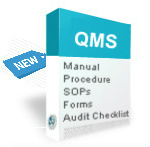
IATF 16949:2016 is the global technical specification and quality management standard for the automobile sector, based on ISO 9001:2015. Rather than being a stand-alone QMS, it is intended to be used in conjunction with ISO 9001:2015 and includes extra requirements relevant to the automotive industry. IATF 16949:2016 standard brings together requirements from throughout Europe and the United States, describing all that needs to be known about achieving best practices while designing, developing, producing, installing, or maintaining automotive goods. It can be utilized by any business and is intended for usage by organizations of any size or industry. Many businesses regard this as the minimum necessary for an organization to be a supplier because it is recognized as the foundation for any business to build a system to assure customer satisfaction and improvement.
Developing documentation and a record control system is an important aspect of adopting an IATF 16949-based Quality Management System (QMS). The organization must generate the most appropriate documentation, as it will determine how the QMS is maintained and enhanced, as well as how documents and records must be created, published, withdrawn, and used. Before commencing to generate IATF 16949 documents, the organization should first understand each document, its purpose, and its location in the document structure. A quality policy, quality manual, procedures, work instructions, guidelines/Standard Operating Procedures (SOPs), records, and forms are all required when establishing an IATF 16949 Quality Management System. Each document and record type has a purpose in the QMS and has a specific place in the documentation structure.
When people are just getting started with creating documentation, they frequently become confused about what order the documents should be in and which is more significant than the others. So, some of the most usual documentation are included below to help make the documenting process easier and faster. Certain documentation is required as part of the Quality Management System according to IATF 16949 standard. There are several reasons why this documentation is required:
- To provide a comprehensive overview of the company’s operations
- To provide a more comprehensive understanding of the QMS
- To improve process consistency
- To demonstrate achievement of goals and objectives
It is critical that the individual focus on what the organization needs to document throughout the preparation of the QMS documents: What documents can help boost efficiency? What documents are relevant to the company and the industry in which it operates? The last thing that is required is a slew of unnecessary documents that no one uses since they are irrelevant.
- Quality manual: The IATF 16949 quality manual must be customized as per the organization, with its structure and content depending on factors including the size of the organization, the complexity of its operations, and the skill level of the staff. Smaller businesses will be able to contain their entire QMS in a single manual; however, larger businesses with multiple locations will probably have multiple different quality manuals. The following fundamental components will often be present in the quality manual:
- Document title
- Table of contents
- QMS scope and exclusions
- Information on version and approval
- Description of the Quality Management System
- The company’s business process model
- Definitions of employee responsibilities
- References to relevant documents and appendices
- Quality policy: In particular, “policy” refers to a statement of an organization’s assertion. A quality policy should indicate the company’s commitment to quality and continuous process improvement. Because it is frequently utilized for promotional purposes, displayed on the firm premises, and posted on its website, this policy should be succinct, concise, and to the point. The quality policy’s purpose is to create the framework for accomplishing quality objectives inside the organization. By quantifying these quality objectives, the company’s quality targets are defined.
- Procedures: The document title, purpose and scope, responsibilities and authority, descriptions of all actions, and references to any applicable SOPs, work instructions, and records should all be included in QMS processes. It is up to you how you document this information: processes can be written in narrative style, illustrated with diagrams and flow charts, structured with tables, or a combination of formats. Appendices may be included if necessary.
- Work instructions: Work instructions might be included in a procedure or merely referred to in the procedure. Work instructions typically contain the same parts as procedures and have a comparable structure. The difference is that work instructions are more explicit, covering activities that must be completed, stages to be taken and in what order, tools and procedures to be utilized, and accuracy requirements.
- Records and forms: In brief, the organization must demonstrate the actions and processes carried out by the procedures and work instructions. This is when records and documents come into play. The majority of them will be performed by employees, but a few will be the duty of top management (for example, Management Review Minutes). Focus on brief, easy-to-complete records and forms to keep them practical (and staff using them).








